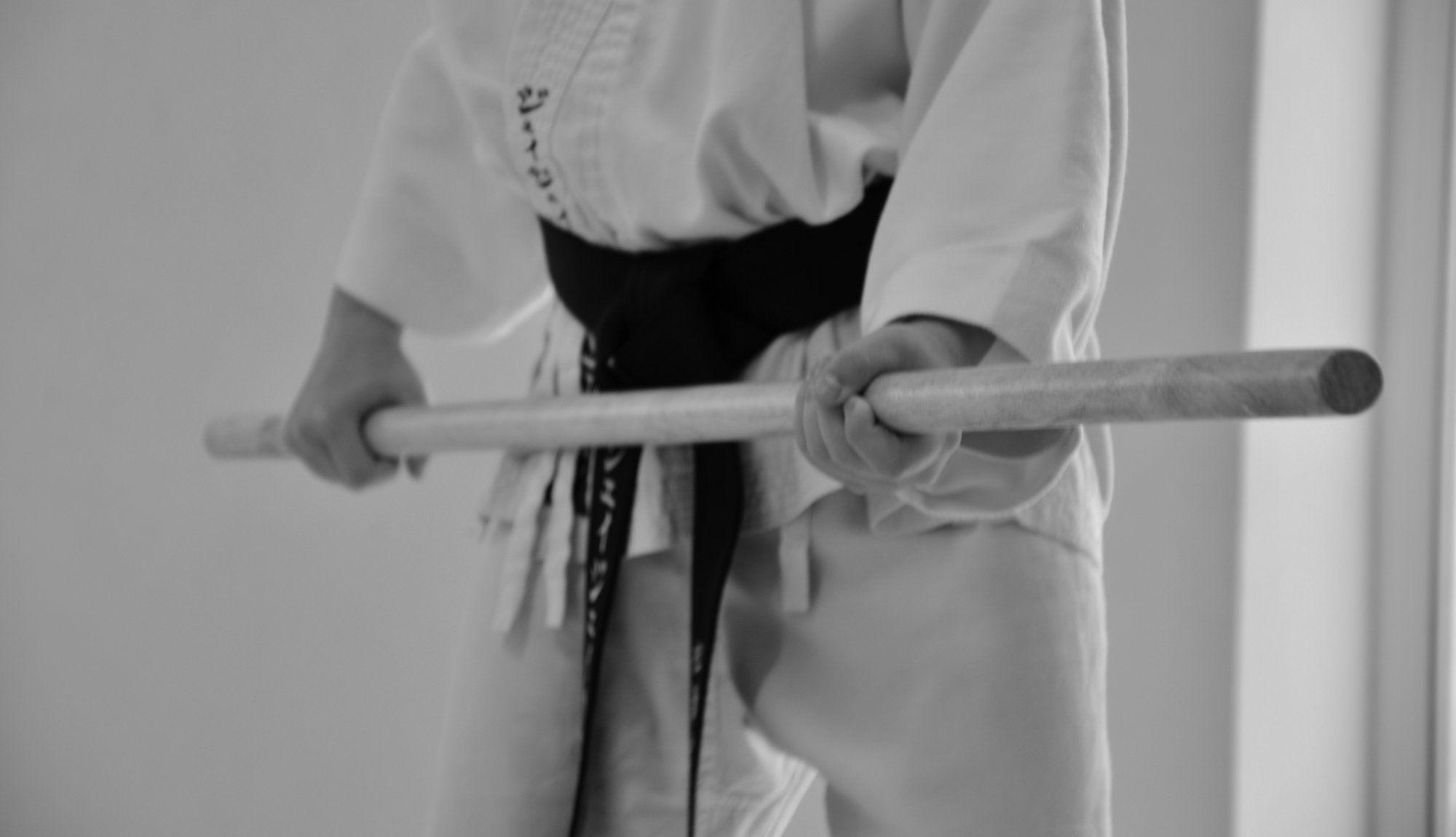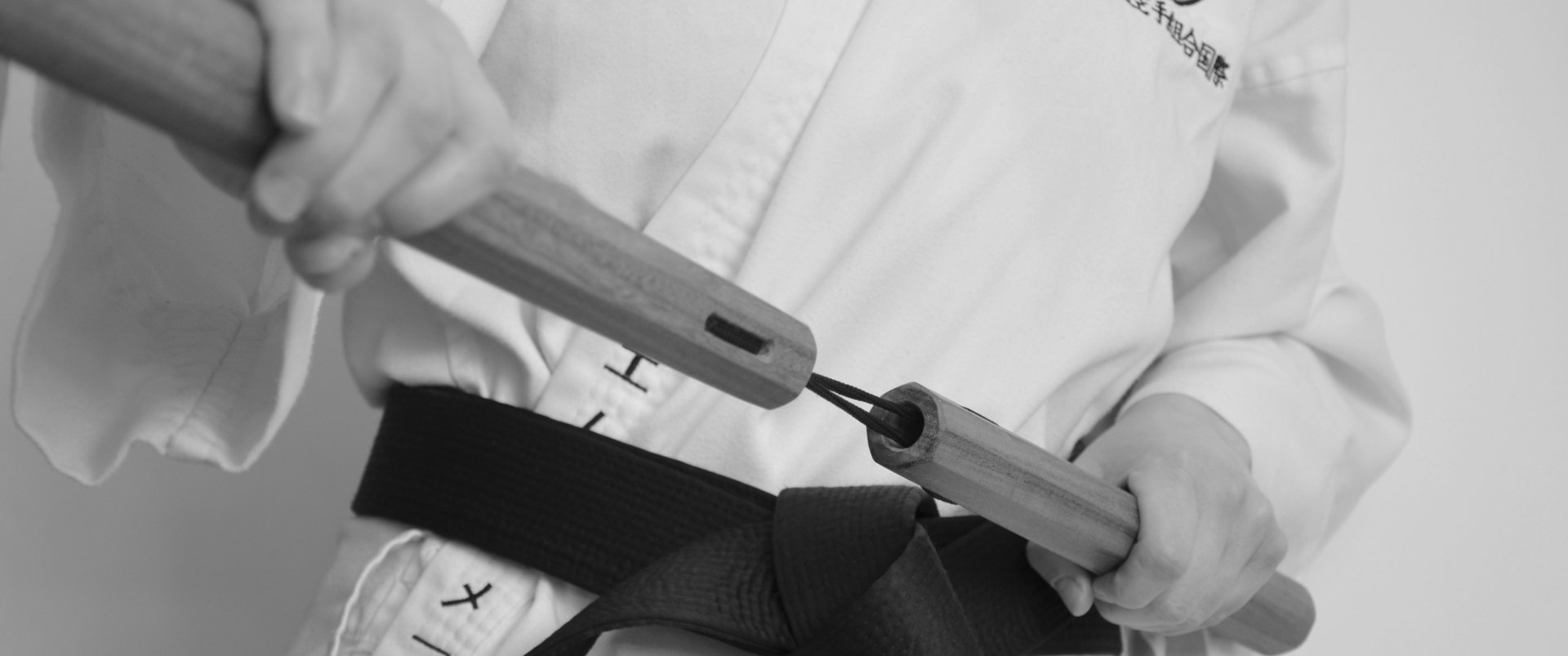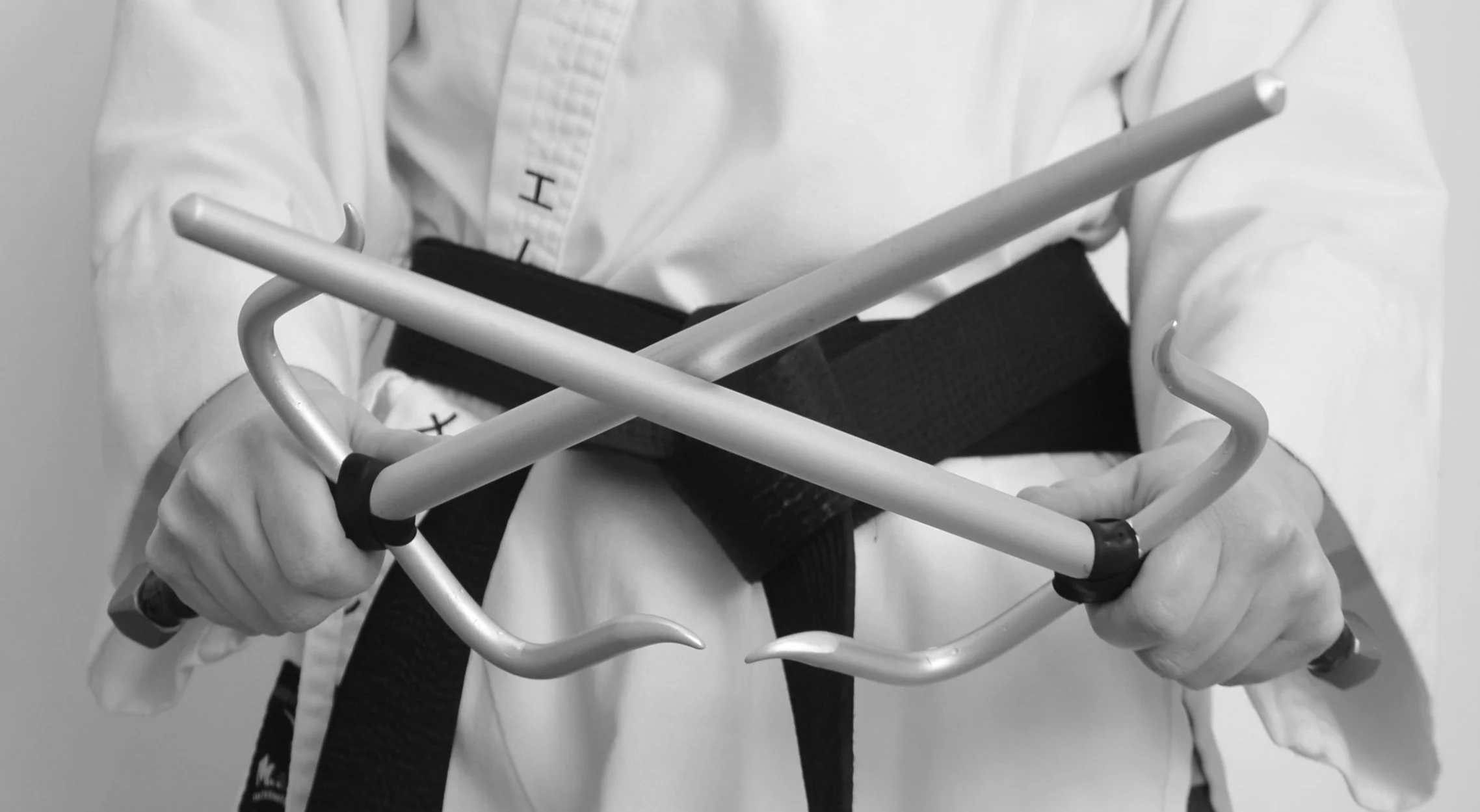
Kobudo
Kobudō refers to the weapon systems of martial arts, included the rokushakubo (six foot staff, known as the bō), sai (dagger-shaped truncheon), tonfa (handled club), kama (sickle), and nunchaku (chained sticks), but also the tekko (knuckledusters), tinbe-rochin (shield and spear), and surujin (weighted chain). Less common weapons include the tambo (short stick), the hanbō (middle length staff) and the eku (boat oar).
Weapons
-

Bo
The bō is a six-foot long staff, sometimes tapered at either end. It was perhaps developed from a farming tool called a tenbin: a stick placed across the shoulders with baskets or sacks hanging from either end. The bo was also possibly used as the handle to a rake or a shovel. The bo, along with shorter variations such as the jo and hanbo could also have been developed from walking sticks used by travelers, especially monks. The bo is considered the 'king' of the weapons, as all others exploit its weaknesses in fighting it, whereas when it is fighting them it is using its strengths against them. The bo is the earliest of all weapons (and effectively one of the earliest of all weapons in the form of a basic staff), and is traditionally made from red or white oak.
-

Nunchaku
The nunchaku is two sections of wood (or metal in modern incarnations) connected by a cord or chain. There is much controversy over its origins: some say it was originally a Chinese weapon, others say it evolved from a threshing flail, while one theory purports that it was developed from a horse's bit. Chinese nunchaku tend to be rounded, whereas Okinawan ones are octagonal, and they were originally linked by horse hair. There are many variations on the nunchaku, ranging from the three sectional staff (san-setsu-kon) to smaller multi-section nunchaku.
-

Sai
The sai is a three-pronged truncheon believed to be a variation on a tool used to create furrows in the ground. The sai appears similar to a short sword, but is not bladed and the end is traditionally blunt. The weapon is metal and of the truncheon class with its length dependent upon the forearm of the user. The two shorter prongs on either side of the main shaft are used for trapping (and sometimes breaking) other weapons such as a sword or bo.

